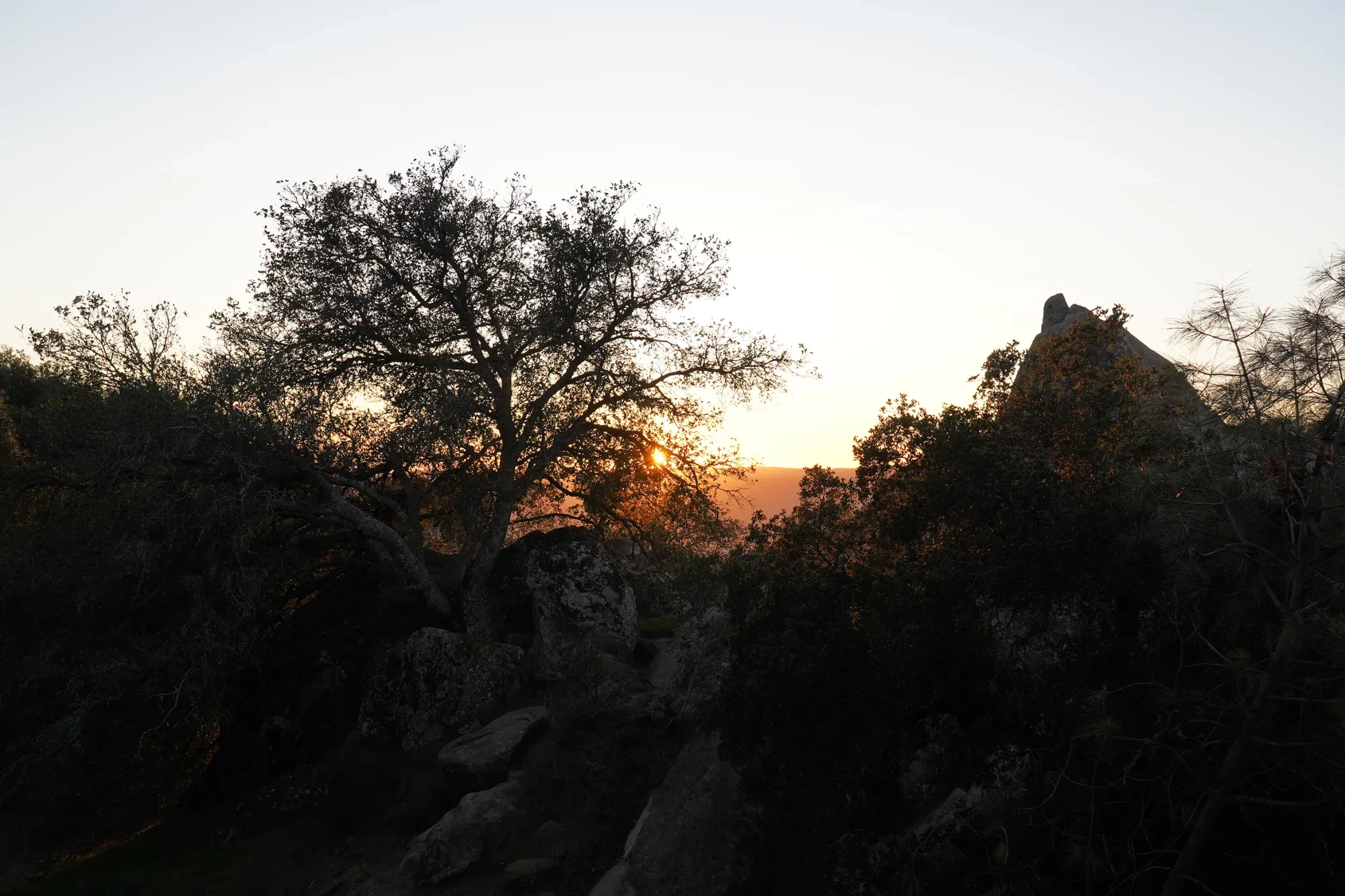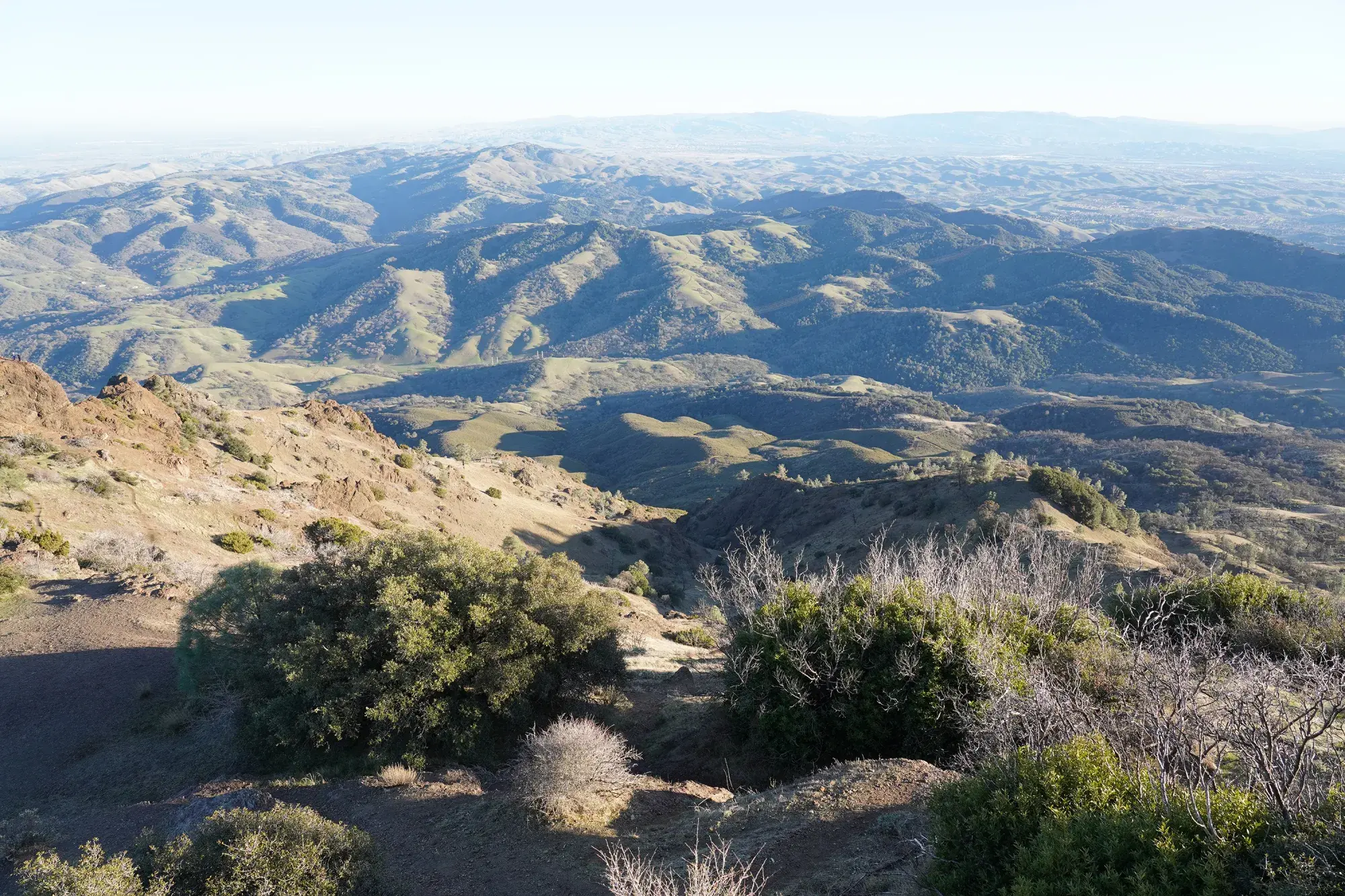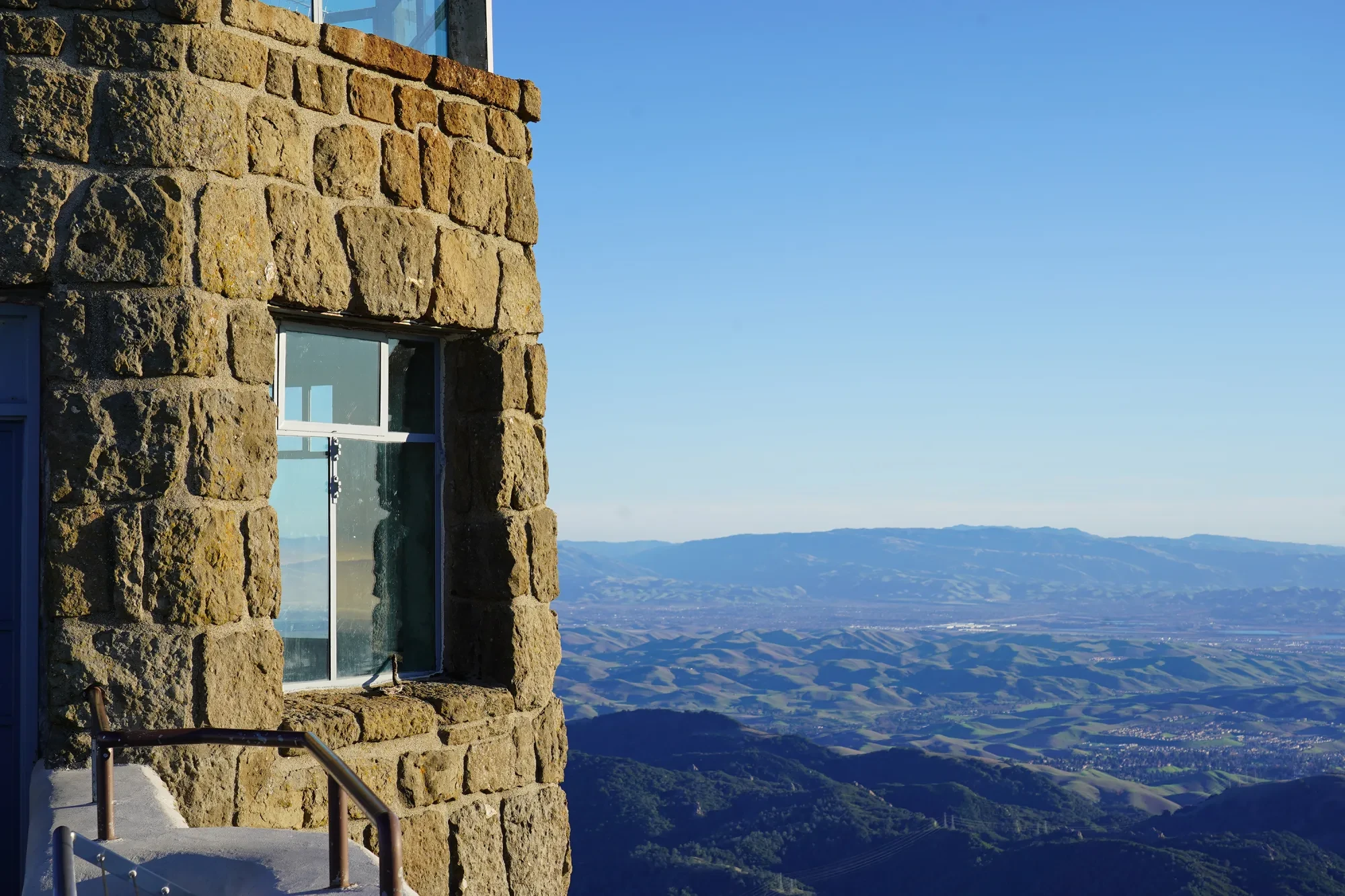"Clear and cool. Beautiful silvery haze on Mount Diablo this morning, on it and over it – outlines melting, wonderfully luminous." – John Muir while he was living in Martinez, CA.
Rising above the valleys of the East Bay stands one of California’s most iconic landmarks, Mount Diablo. This geological marvel is one of the state’s most legendary parks, and has been the subject of legends, scientific research, and historic interest for thousands of years.
Geology
When we discuss geologic time (time in terms of geologic processes), Mount Diablo is actually quite a young landform at around 2 million years old – just a baby when it comes to the Earth’s natural processes. Mount Diablo’s peak started as plates on the ocean floor, the evidence of which you can see in the fossilized remains of sea creatures and plants near the summit. The plates that formed Mount Diablo began to rise over the next 2 million years, and debate still exists as to why exactly that happened, which makes Mount Diablo a fascinating site for researchers around the world.
Anthropological History
The first known history of humans on Mount Diablo and the surrounding area is around 2000 B.C. According to several Native American histories, Mount Diablo was the birthplace of humankind. Several tribes described Mount Diablo in their traditions including Ohlone, Nisenan, and Miwok. For many generations, Native Americans lived and worked on the mountain and the surrounding hills. Men would typically hunt deer with bows and arrows, carved out of naturally occurring obsidian. Women would stay in the villages, grinding nuts and seeds with mortar rocks, the scars of which you can still see today in the aptly named Rock City.
In the late 1700s and 1800s, the Spanish began to arrive in the region, bringing missionaries with them. The modern name of Mount Diablo comes from members of the Spanish military referring to it as “the thicket of the Devil” after losing track of several Native Americans they were attempting to capture. With the Treaty of Guadalupe Hidalgo in 1848, Mount Diablo became part of the United States of America, and homesteading was allowed in the surrounding region for $1/acre.
As the population around Mount Diablo began to grow, the mountain took on another purpose. The late 1800s saw some of the first recreational use of Mount Diablo with the construction of the Mountain House Hotel.
In 1921, Mount Diablo was designated a California state park and over the years it was expanded to its present day stretch of 20,000 acres.
What to Do on Mount Diablo
Mount Diablo provides ample opportunity for recreation and education. The trail to the peak is popular with experienced bikers who brave the almost 4000ft elevation climb. You can also drive to the summit and look out over panoramic views of the Bay Area and Central Valley. On clear days, you can see 38 of California’s counties! You can also visit the interpretive center to learn more about the history of Mount Diablo as well as some of the endemic species to the mountain. In fact, there are several plant species that are only found Mount Diablo including the Mount Diablo sunflower, Mount Diablo fairy-lantern, Mount Diablo manzanita, and Mount Diablo bird’s beak.
Mount Diablo even gets a dusting of snow typically 2-3 times a year during the winter. If you’re lucky, you can travel to the peak for a snow day!
Mount Diablo has a long history in the folklore and culture of California, and has played many roles over the years. Do yourself a favor and visit this magnificent mountain!
Note: The parking lot at Mount Diablo State Park is currently closed due to the ongoing COVID-19 pandemic. You can explore the park virtually on Save Mount Diablo’s website at https://www.savemountdiablo.org/activities/.


